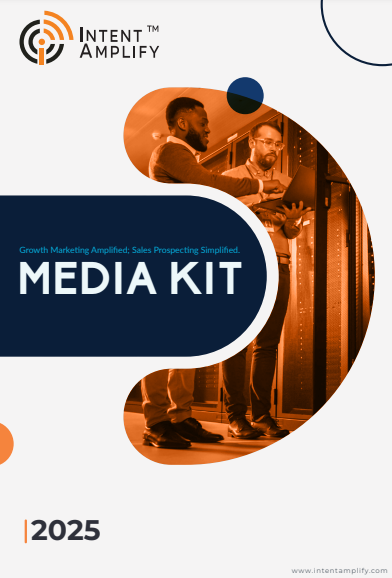
The Future of Personalized Marketing: How Dynamic Segments Drive Results
- Last updated on: October 2, 2025
The implementation of personalized marketing has gone a long way in B2B demand generation to become one of the critical components rather than just a “Desirable” strategy. The days when buyers were satisfied with receiving communications of generic value have long gone. They expect every communication to be highly relevant, timely, and context-aware. Traditional broad campaigns and generic outreach are no longer sufficient to attract the interest of the decision-makers of today, who receive an avalanche of content and multiple offers from which to choose.
About Dynamic Segments
Dynamic segmentation is finding itself on the verge of becoming a very important factor in this process. One of the reasons is that marketers can deliver personalized experiences to accounts and prospects. This will be based on their behavior, firmographics, intent signals, and any other real-time data. It is also proven that using personalized marketing in targeted campaigns is capable of producing even up to 20% higher engagement rates, and conversion efficiency may increase by almost 30%, compared with untargeted approaches.
We will elaborate on B2B marketers needing to accept the future trends for the sake of staying competitive after discussing the benefits that dynamic segments offer in terms of personalized marketing, along with some practical ways of making them work..
The Challenge with Generic Marketing
Broad, Universal marketing is still used by most B2B companies. These unclear tactics barely draw in the intended audience and provide little to no meaningful engagement. One of the causes is that B2B buyers are working in complex multi-stakeholder settings. In the whole decision-making process, it is not uncommon for an account to have several managers. And each of them can have different priorities, pain points, and buying signals. If contacts in generic campaigns are treated the same, they will probably be at best ignored and at worst sent to the spam folder.
Moreover, the timing is another factor. In a fast-moving market, delivering the proper information at the wrong moment is just as unsuccessful as sending the incorrect message. Marketers will be unable to identify the optimal moment to approach buyers who are most eager to interact unless they have updated data on prospect behavior and intent.
Moreover, the rise of anonymous research baffles things even more. The investigation reveals that as much as 70% of the B2B procuring activities happen before a lead fills out a form or has a direct conversation with the sales team. Depending only on the conventional lead-capture methods severely restricts the visibility of buyer behavior, which is the main reason why generic campaigns become less and less effective.
How Dynamic Segments Improve Personalized Marketing
Dynamic segmentation is the process of dividing accounts or leads depending on their current behavior, characteristics, and predictive indicators instead of pre-defined static lists. Such a method provides the marketers with various possibilities. These are for uncovering the buying intent and personalizing their communication. And hence effectively freeing time for the sales process that follows. Types of Dynamic Segments:
- Behavioral Segmentation – This type of segmentation refers to the grouping of prospects whose engagement patterns, content consumption, website visits, and interaction history are similar. For instance, those accounts that have been visiting the pricing pages repeatedly can be sent messages that focus on value and ROI.
- Firmographic Segmentation – This kind of segmentation deals with the division of accounts based on their company size, industry, location, or revenue potential. For example, a fintech SaaS company may develop separate campaigns for large banks and mid-market financial institutions. That too, with messaging adjusted to the regulatory requirements and operational scale of the two.
- Technographic Segmentation – Just refers to the technology of a company. The marketers can matter product integrations, compatibility, or migration support. That can be for different software environments, making campaigns more applicable.
- Intent-Based Segmentation – Incorporates third-party and first-party intent signals for recognizing accounts. That is eventually observing buying interest. It may consist of content downloads, social engagement, search queries, or competitor research. And teams will consequently be able to prioritize high-value accounts in advance.
Marketers can develop deeply personalized campaigns. These cater to the challenges and interests of each group by using these segments. The outcome will be not only increased interaction. But also a more effective distribution of marketing budgets.
Driving Creativity and Engagement Through Personalization
Dynamic segments do not just improve targeting, but also energize content and the entire campaign design. Once the marketers are aware of the exact requirements, problems, and ways of life of each segment, they can produce the content that really connects with the buyers.
For case in point, a cybersecurity firm can profile the behavior and technology usage data to tailor different marketing messages for the enterprises that have traditional on-premises systems as opposed to those that have cloud-native infrastructures. The communication could offer safety measures for the old systems while at the same time stressing the advantages of the users of the cloud, such as scalability and compatibility.
Along with this, dynamic segmentation is also instrumental for A/B testing and running different campaigns. By seeing how different segments react to a particular message, marketers can be agile in their efforts of creative assets and messaging strategies as they base these on real data instead of mere assumptions. Campaigns that merge the accuracy of targeting with the creative flexibility are seen as being up-to-date, relevant, and giving the user the feeling of having been contacted directly – just what today’s B2B buyers require.
Working a Realistic One-on-One Marketing Plan
Transitioning from generic campaigns to a sophisticated, one-on-one marketing style is a gradual and somewhat complex process that requires a careful, planned, and stepwise progression.
1. Audit Existing Data and Campaigns
Firstly, you need to have a look at your lead and account data that is currently available. Try to uncover the missing pieces that can include behavior tracking, firmographics, and engagement metrics. Check the existing campaigns to decide which are doing well and which are not utilizing personalization opportunities to the needed extent.
2. Define Segmentation Criteria
With the help of the audit, initiate the creation of dynamic segments based on behavioral, firmographic, technographic, and intent-based criteria. Make sure that your segments are significant, doable, and are in line with your objectives for marketing and sales.
3. Map Content to Segments
The messaging and content should be prepared with each segment as the focus. There is a lot that can be done to address the different groups’ issues and priorities, for example, whitepapers, webinars, product demos, case studies, or industry insights.
4. Automate and Orchestrate Campaigns
Use marketing automation platforms along with CRM systems to deliver the best message to the most suitable account at the perfect time. Automation is, on the one hand, the means by which your work requires the least amount of effort and is consistent, and, on the other hand, it also allows for instant adjustments depending on engagement signals.
5. Measure, Optimize, and Iterate
Track different metrics such as engagement, conversion rate, and pipeline for each segment. By doing this, you will have the insights that will enable you to adjust your segmentation rules, messaging, and content delivery. Buyer behavior is always changing, so the ongoing optimization will keep campaigns relevant.
B2B marketers can, by these means, personalize marketing at scale in an orderly fashion, thus not only keeping but also deepening engagement, pipeline quality, and revenue outcomes.
Future of Personalized Marketing
The progression of personalized marketing is being transformed into a predictive, AI-powered system. The use of advanced algorithms can detect intention signals through different channels. It eventually predicts the behavior of an account. This helps marketers to interact with potential buyers before they show any explicit interest.
Another trend that is emerging is zero-click lead generation. The marketers can reveal the intent of the buyers by analyzing the micro-conversions like content views, video interactions, or webinar participation without the need for traditional form fills. These early signals provide information to the nurturing campaigns and help in setting the high-value accounts’ priority.
Moreover, multi-modal personalization combines website behavior. In addition to that, it includes email engagement, social media interactions, and offline activity. This will surely be in the future. The skill to combine signals from different channels gives the marketer a complete understanding of the account’s intent. This ensures that the messaging is timely, relevant, and consistent. For B2B marketers, implementing these innovations is beyond the question of whether to do it or not. Those organizations that do not take advantage of dynamic segmentation and predictive personalization will be left behind by their competitors. Because they are delivering meaningful, engaging experiences to the right accounts at the right time.
Conclusion
Dynamic segmentation is revolutionizing one-to-one marketing. And creating a whole new personalized marketing landscape. Marketers are able to deliver to their audience targeted, relevant, and engaging experiences. As a result, abandoning generic campaigns and using various kinds of data. This includes behavioral, firmographic, technographic, and intent-based data. That in turn leads to measurable outcomes.
Today, for B2B marketers, personalized marketing is about creating an account-first signal-driven pipeline. This is capable of accelerating revenue and establishing stronger buyer relationships.
At Intent Amplify®, we work with technology, SaaS, fintech, and cybersecurity companies to employ dynamic segmentation and personalized marketing strategies. This eventually attracts intent, boosts engagement, and delivers predictable growth. A new reality can be established where data will be transformed into results by teams. This would require the use of a combination of actionable insights, marketing automation, and real-time analytics. As a result, your marketing based on personalization will be more effective than that of traditional types.
FAQs
- What is personalized marketing in B2B?
It is a method that involves providing relevant content and delivering campaigns that are customer-centric. They should be based on data and insights and be suitable for specific accounts, segments, or buyers.
- Why are dynamic segments important?
tyle=”font-weight: 400;”>>Dynamic segments let marketers coalesce accounts on the basis of up-to-the-minute behavior, firmographics, and intent signals; thus, they can make tighter-targeted and more effective programs.
- Can personalized marketing be automated?
ss=”yoast-text-mark”>ss=”yoast-text-mark”>=”font-weight: 400;”>Indeed. Automation platforms of marketing can send segment-specific messages to a large number of people simultaneously while tracking engagement and optimizing in real time.
- How do we measure the success of personalized marketing?
<span class=”yoast-text-mark” style=”font-weight: 400;”>>Among the key performance indicators are the rates of engagement, the rates of conversion, the velocity of the pipeline, and revenue influenced by the targeted campaigns.
- Is personalized marketing suitable for all industries?
Absolutely. Though the behavior of the consumers can be different, the dynamic segmentation and the tailored messaging that is your most B2B industries and regions can be utilized for can be adapted.



